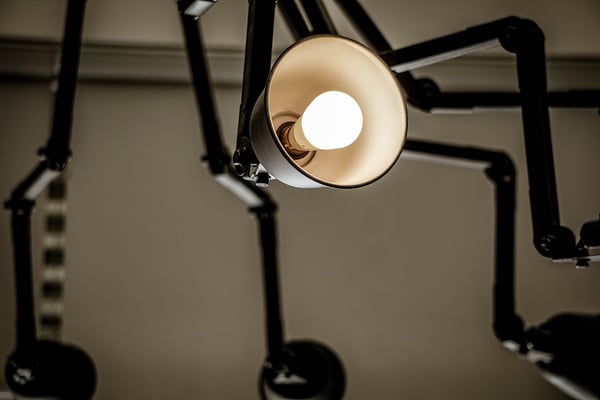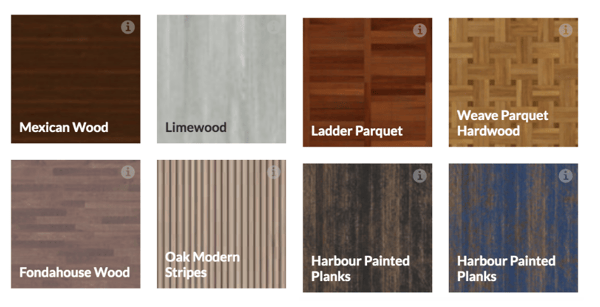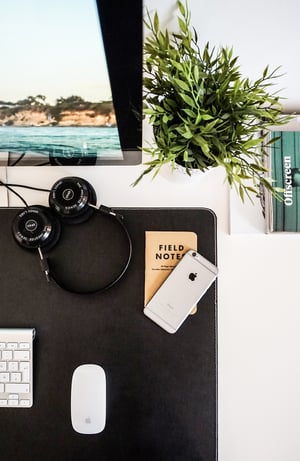With huge amounts of time spent working from home, it's no surprise employees have become accustomed to home comforts, and different work habits. As a result, the return to the office is met with new needs and demands.
To encourage employees to return to the workplace, whether it be on a flexible schedule or full-time, companies need to provide well-designed, comfortable and functional office spaces that make commuting into the office worthwhile.
So, in order to make this transition a smooth one, we decided to examine the most effective features of an office, give our top tips on creating a productive and well-balanced space, and even allow you to design your own office space.
1. Lighting
As one of the most simple and effective ways to adjust your office space, lighting can make an office go from an uninspiring space to a zone for creativity and immense productivity. While bad lighting can cause fatigue, headaches, and eye strain, a well-lit room can boost energy and alertness, and increase overall productivity.
While working from home, many of us have got used to controlling our own space, with the option to open windows or adjust the lighting as they wish to create cosiness and ambience. That's why it's imperative that upon returning to the workplace, employees feel like they are in an equally pleasant and enjoyable environment.

Ultimate lighting tips:
Tip 1: cool blue or white lights are better for working and concentration but, if you can, make the most of natural lighting. - it's normal for lighting to change throughout the day, and your office space can reflect this.
Tip 2: Placing windows on south facing walls will also allow you to maximise sunlight throughout the day.
Tip 3: Adding special light features, such as a light atrium, will draw in more natural light to your office space.
46% of employees would like to see better access to natural light, but with well-thought out office design, this can be avoided. Orega Offices allows individuals to design their office space, selecting from an array of lighting options including hanging light fixtures, desk lamps, floor lights, and ceiling fixtures.
2. Room Colour
Colours elicit different emotions which means the colour palette you choose for your workspace will have a huge impact on the mood. As individuals have the freedom to design their own homes to be relaxing and productive, it's equally important their office space offers them the same level of comfort.
If you are designing an office space, select colours that are calming, encourage productivity, and aren't overwhelming. These colours are typically: off-white, blue, and grey.
For inspiration, our office tool allows you to select from an extensive colour palette, as well as select your preferred materials, ranging from wood to stone and tile to bring warmth and texture to your space.

3. Office Layout & Functional Design
Office layout and design are important for a multitude of reasons, such as fostering teamwork, employee productivity, comfort, and inspiration - to name a few.
When it comes to layout and design, there are several things to keep in mind. Firstly, make sure you are optimising the space you have. Allow enough space to work comfortably, while taking into account natural lighting and view.
Pro tip: position your desk to face the windows or in a location where your computer screen will not be affected by the glare.
With this, ensure your office space has storage and shelving that will guarantee better workflow, and avoid clutter and stress.
4. Private & social spaces
With 80% of employees citing the workplace as a place to collaborate, making sure your office has 'place to meet', meaning there's an area where you can sit down for meetings, catch up with colleagues, or take a break, is essential. With months spent working from home, people are craving in-person interaction, so it's important to facilitate this in an office space.
Work performance and office layout have a direct relationship, but it's also important to recognise different offices have different demands, whether that's size or specific furniture. In this, individuals also have working preferences, meaning it's important to create distinct separate spaces for solo focused work and collaborative work. Subsequently, our office design tools allow you to design your own office layout, selecting everything from materials and office size to additional features and furniture positioning.
Laura Walker, Sales and Marketing Direct, Orega, comments:
"The office is an important place for meeting and collaborating with our colleagues. It's important our workspaces are well thought out, not only for our performance, but our health and wellbeing, too. Office design and set up play a role in improving productivity, in particular natural light and plants, which has also led to increased employee satisfaction. Alternative workstations are becoming more in demand as people return to the office and as such people are utilising breakout areas if they need to get away from their desks and think or have a quick meeting or just catch up with your team."
5. Personalised spaces and homely touches
With time working from home, many employees have been able to design and work in their own office. While home offices allow the opportunity to add personal touches, or homely features, there's no reason your office space can't provide the same comforts.
To make your company's office space more personalised, consider adding some homey features, like indoor plants and flowers, room diffusers and desk lamps for added comfort and a luxurious feel. Making sure employees are comfortable by providing a good chair is also key.

What does this look like?
- Pale green/grey walls - tranquil and relaxing to keep stress levels down
- Plants - to promote wellbeing and for air purification
- Cosy breakout area - with soft furnishings to add a sense of comfort and luxury
- Large south-facing windows - for natural light throughout the day
- Stand up desks to avoid fatigue
- Individualised areas - ensuring there's spaces for collaboration and solo work
- Maximised use of natural light to create an enjoyable and productive environment
The Opportunity to Design your Ideal Office
To design and create your perfect office space, check out the Orega office designer tool.

